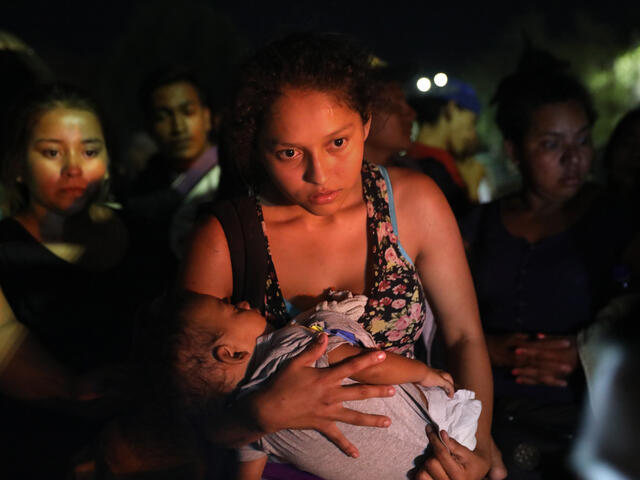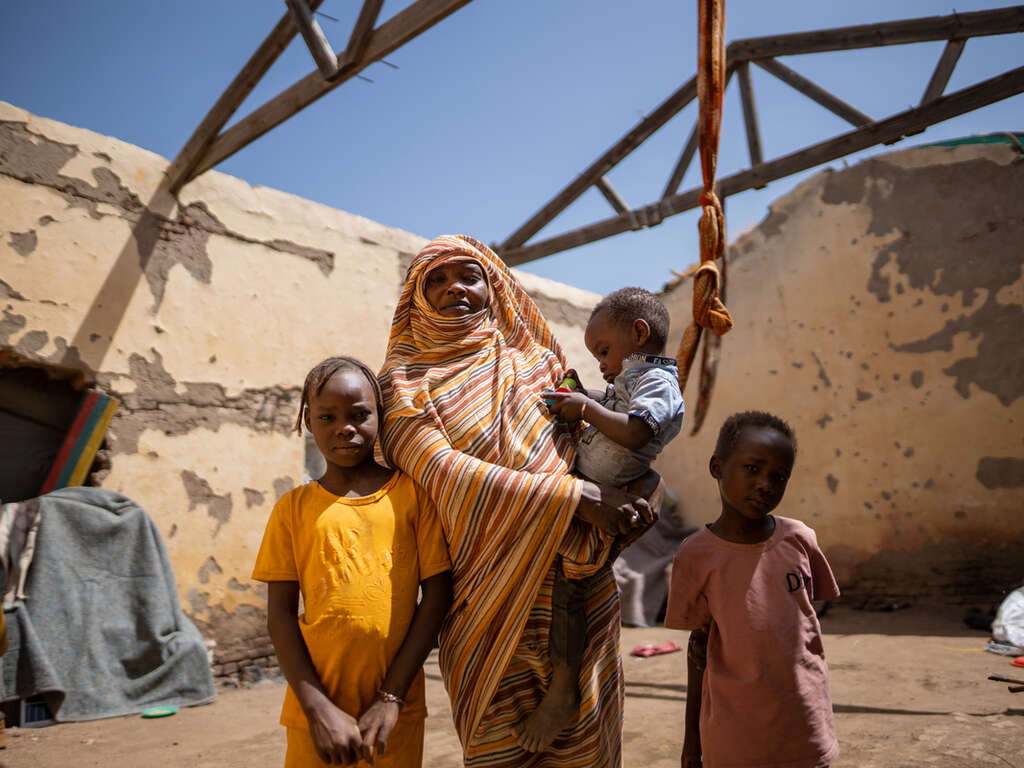Every day, people around the world make the difficult decision to leave their countries in search of safety and better lives.
Why?
There are over 120 million men, women and children around the world who have been forced to flee their homes. That number, which includes refugees, asylum seekers and internally displaced persons (IDPs), has doubled in just ten years.
There are others who are looking for jobs or an education—they are usually called migrants—and people who want to live permanently in another country—immigrants.
Who is a refugee?
A refugee is someone who has been forced to flee his or her home because of war, violence or persecution, often without warning. They are unable to return home unless and until conditions in their native lands are safe for them again.
An official entity, such as a government or the United Nations Refugee Agency, determines whether a person seeking international protection meets the definition of a refugee, based on well-founded fear.
Those who obtain refugee status are given protections under international laws and conventions and lifesaving support from aid agencies, including the International Rescue Committee. Refugees in the U.S. also have the opportunity to become lawful permanent residents and eventually citizens.
Who is an internally displaced person?
Like refugees, internally displaced people (IDPs) have been forced to flee their homes due to conflict, violence, persecution or disaster. However, IDPs remain in their home country and do not cross international borders to seek safety.
At the end of 2024, more than 83 million people were internally displaced—the highest number on record and double the number of IDPs in 2018. Nearly 10 million IDPs were displaced by disasters, highlighting climate change’s role in intensifying vulnerabilities and displacements.
IDPs are among the most vulnerable people in the world. Many are trapped in dangerous regions and live in overcrowded camps without access to basic services.
Who is an asylum seeker?
An asylum seeker is someone who is seeking international protection from dangers in his or her home country, but whose claim for refugee status hasn’t been determined legally. The U.N. reported that there were 8 million asylum seekers globally in June 2024.
Asylum seekers must apply for protection in the country of destination—meaning they must arrive at or cross a border in order to apply. Then, they must be able to prove to authorities there that they meet the criteria to be covered by refugee protections. Not every asylum seeker will be recognized as a refugee.
Get the facts on what’s happening at the U.S. border.
Who is an immigrant?
An immigrant is someone who makes a decision to leave his or her home and move to a foreign country with the intention of settling there, but not because they are fleeing war, violence or persecution. Immigrants often go through a lengthy vetting process to immigrate to a new country. Many become lawful permanent residents and eventually citizens.
Immigrants research their destinations, explore employment opportunities, and study the language of the country where they plan to live. Most importantly, they are free to return home whenever they choose.
Learn about the IRC’s immigration work.

Who is a migrant?
A migrant is someone who is moving from place to place (within his or her country or across borders), usually for economic reasons such as seasonal work. Similar to immigrants, they were not forced to leave their native countries because of persecution or violence, but rather are seeking better opportunities.
Many of those crossing the U.S. border are asylum seekers, not migrants. They have a well-founded fear of persecution if they were to return home.
What if you only had 5 minutes to pack?
Every minute conflict and disaster force 20 people to flee their homes, often with mere seconds to make impossible choices about what to bring with them on a journey of unknown length to an unknown destination.
These numbers tell a story of global upheaval, of people fleeing violence and climate disasters in search of safety and stability. To forge a path toward a more secure future for all, the world must address both the immediate needs of these displaced populations and the root causes driving such large-scale displacement.
How can I support people seeking safety?
Over 120 million people have been forced to flee their homes. Humanitarian organizations like the International Rescue Committee (IRC) deliver lifesaving services where they’re needed most—from camps for displaced people in Sudan and Syria, to remote villages in Afghanistan, to resettlement programs in safe countries.
But severe cuts to aid funding have impacted our programs for some of the world’s most vulnerable groups.
Now is the time to meet the moment—donate now to deliver critical humanitarian services around the world.
What is the IRC?
The IRC helps refugees and displaced people find safety and rebuild their lives by resettling and integrating into new communities in the U.S. and across Europe. We deliver life-saving services to refugees and displaced people abroad, including in some of the world’s largest and most crisis-affected refugee camps.
The IRC also responds to the world’s most urgent humanitarian crises including in Sudan, Ukraine and the occupied Palestinian territory. Founded at the call of Albert Einstein over 90 years ago, the IRC remains dedicated to helping people affected by crises to survive, recover and rebuild their lives.
We consistently earn top marks by charity watchdog groups for our efficient use of donor contributions and the effectiveness of our work.
Support our mission—help crisis-affected people survive, recover and rebuild their lives.




